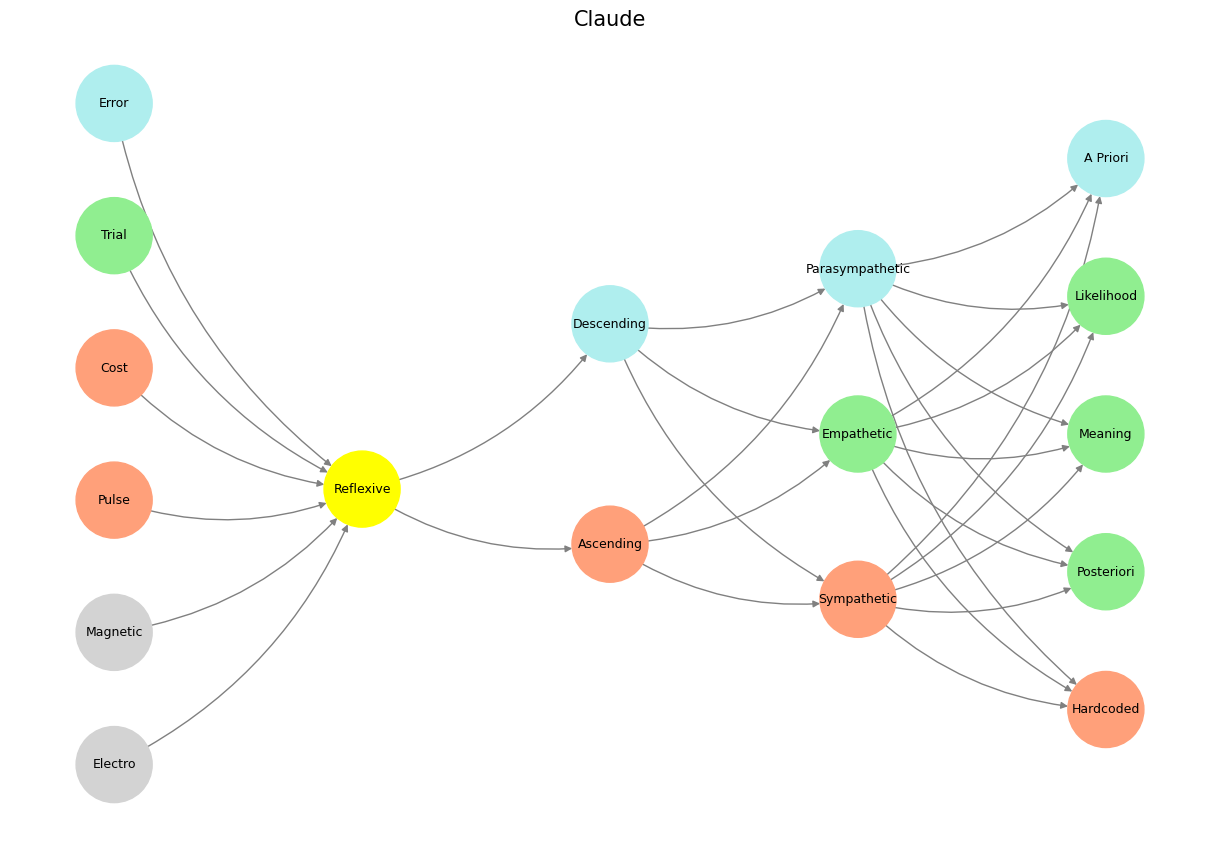Freedom in Fetters#
The structure of gossip, as mapped onto the neural network of English society, is not merely an artifact of cultural evolution but a deeply embedded survival mechanism rooted in the Red Queen Hypothesis. Gossip, at its core, is a system for managing information about allies and threats, a way of navigating the social jungle just as our ancestors navigated the physical one. The interplay of the sympathetic and parasympathetic nervous systems in gossip regulation is not arbitrary—it reflects the fundamental reality that social information is a form of resource management, where missteps can be costly, and success means adaptation in an environment of constant change.
In ancestral environments, the stakes of social intelligence were clear. Knowing who could be trusted, who was a threat, who was rising in influence, and who was falling into disgrace was as essential as knowing where to find food or how to evade predators. Those who failed to accurately assess social dynamics faced ostracization, a fate that, in small, interdependent groups, often meant death. The sympathetic nervous system, which governs fight-or-flight responses, would have been engaged whenever social interactions reached high stakes—whenever one’s reputation, survival, or access to resources depended on the information being exchanged. Conversely, the parasympathetic system, which governs states of relaxation and safety, would dominate in gossip about distant figures, where no real danger was present, and the conversation was purely recreational.
Fig. 26 The Next Time Your Horse is Behaving Well, Sell it. The numbers in private equity don’t add up because its very much like a betting in a horse race. Too many entrants and exits for anyone to have a reliable dataset with which to estimate odds for any horse-jokey vs. the others for quinella, trifecta, superfecta#
This evolutionary inheritance is still visible in the modern structure of gossip. The public sphere, where one can freely discuss celebrities and politicians without risk, mirrors the part of the ancestral world where distant tribes, rival groups, or dominant figures existed outside the immediate survival network. In a pre-modern landscape, hearing about the misfortunes of a chieftain from another tribe or a distant warlord would have been low-stakes entertainment, much as reading tabloid gossip today carries no immediate personal risk. One could speculate, comment, and theorize with no consequences—just as today, the latest royal scandal can be dissected over coffee without fear of reprisal. This is the parasympathetic comfort of detached observation, where the information is intriguing but not existentially relevant.
However, as gossip moves inward—toward acquaintances, colleagues, and close social circles—the stakes shift. Now, we enter the territory of real social risk, where the wrong word to the wrong person can have consequences. This is the jungle of our evolutionary past, where every interaction is a potential challenge to one’s status, alliances, or survival. The sympathetic nervous system activates, sharpening perception, increasing vigilance, and preparing the body for confrontation or retreat. This is why workplace gossip is tinged with anxiety—because misjudging a rumor about a manager or a coworker could alter one’s career trajectory. It is why discussing a neighbor’s misdeeds carries an implicit danger—because a poorly chosen disclosure could result in feuds, social exclusion, or retribution. The odds have tightened, and the stakes have risen. In this space, the Red Queen Hypothesis is fully engaged: one must adapt to an ever-changing social environment, where standing still is the equivalent of falling behind.
At the most intimate level, where gossip involves close friends, family, and partners, the Red Queen dynamic reaches its peak intensity. This is the domain of total vulnerability, where information is not just about reputation but about survival itself. In ancestral times, betrayal at this level could mean abandonment, the loss of protection, or the destruction of essential social bonds. Today, this danger manifests in the emotional realm—the consequences of broken trust, fractured relationships, or the loss of social capital. The sympathetic system is highly engaged in these interactions, recognizing the existential importance of discretion, loyalty, and the careful management of information. A whisper in the wrong ear at this level does not just cause social discomfort; it can unravel the very fabric of one’s support network.
Thus, the modern structure of gossip is not simply an English quirk, nor is it a trivial pastime. It is the continuation of an ancient, high-stakes game—the social adaptation necessary for survival in a constantly shifting environment. Just as in the jungle, where predators and competitors are in constant flux, so too in society, alliances, power structures, and vulnerabilities shift. The sympathetic and parasympathetic systems, originally designed to regulate physical survival, now regulate social survival, determining which conversations trigger fight-or-flight responses and which remain in the realm of detached amusement. The Red Queen still reigns, and gossip remains her chosen battleground.
Show code cell source
import numpy as np
import matplotlib.pyplot as plt
import networkx as nx
# Define the neural network fractal
def define_layers():
return {
'World': ['Electro', 'Magnetic', 'Pulse', 'Cost', 'Trial', 'Error', ], # Veni; 95/5
'Mode': ['Reflexive'], # Vidi; 80/20
'Agent': ['Ascending', 'Descending'], # Vici; Veni; 51/49
'Space': ['Sympathetic', 'Empathetic', 'Parasympathetic'], # Vidi; 20/80
'Time': ['Hardcoded', 'Posteriori', 'Meaning', 'Likelihood', 'A Priori'] # Vici; 5/95
}
# Assign colors to nodes
def assign_colors():
color_map = {
'yellow': ['Reflexive'],
'paleturquoise': ['Error', 'Descending', 'Parasympathetic', 'A Priori'],
'lightgreen': ['Trial', 'Empathetic', 'Likelihood', 'Meaning', 'Posteriori'],
'lightsalmon': [
'Pulse', 'Cost', 'Ascending',
'Sympathetic', 'Hardcoded'
],
}
return {node: color for color, nodes in color_map.items() for node in nodes}
# Calculate positions for nodes
def calculate_positions(layer, x_offset):
y_positions = np.linspace(-len(layer) / 2, len(layer) / 2, len(layer))
return [(x_offset, y) for y in y_positions]
# Create and visualize the neural network graph
def visualize_nn():
layers = define_layers()
colors = assign_colors()
G = nx.DiGraph()
pos = {}
node_colors = []
# Add nodes and assign positions
for i, (layer_name, nodes) in enumerate(layers.items()):
positions = calculate_positions(nodes, x_offset=i * 2)
for node, position in zip(nodes, positions):
G.add_node(node, layer=layer_name)
pos[node] = position
node_colors.append(colors.get(node, 'lightgray'))
# Add edges (automated for consecutive layers)
layer_names = list(layers.keys())
for i in range(len(layer_names) - 1):
source_layer, target_layer = layer_names[i], layer_names[i + 1]
for source in layers[source_layer]:
for target in layers[target_layer]:
G.add_edge(source, target)
# Draw the graph
plt.figure(figsize=(12, 8))
nx.draw(
G, pos, with_labels=True, node_color=node_colors, edge_color='gray',
node_size=3000, font_size=9, connectionstyle="arc3,rad=0.2"
)
plt.title("Claude", fontsize=15)
plt.show()
# Run the visualization
visualize_nn()

#
Fig. 27 From a Pianist View. Left hand voices the mode and defines harmony. Right hand voice leads freely extend and alter modal landscapes. In R&B that typically manifests as 9ths, 11ths, 13ths. Passing chords and leading notes are often chromatic in the genre. Music is evocative because it transmits information that traverses through a primeval pattern-recognizing architecture that demands a classification of what you confront as the sort for feeding & breeding or fight & flight. It’s thus a very high-risk, high-error business if successful. We may engage in pattern recognition in literature too: concluding by inspection but erroneously that his silent companion was engaged in mental composition he reflected on the pleasures derived from literature of instruction rather than of amusement as he himself had applied to the works of William Shakespeare more than once for the solution of difficult problems in imaginary or real life. Source: Ulysses#

